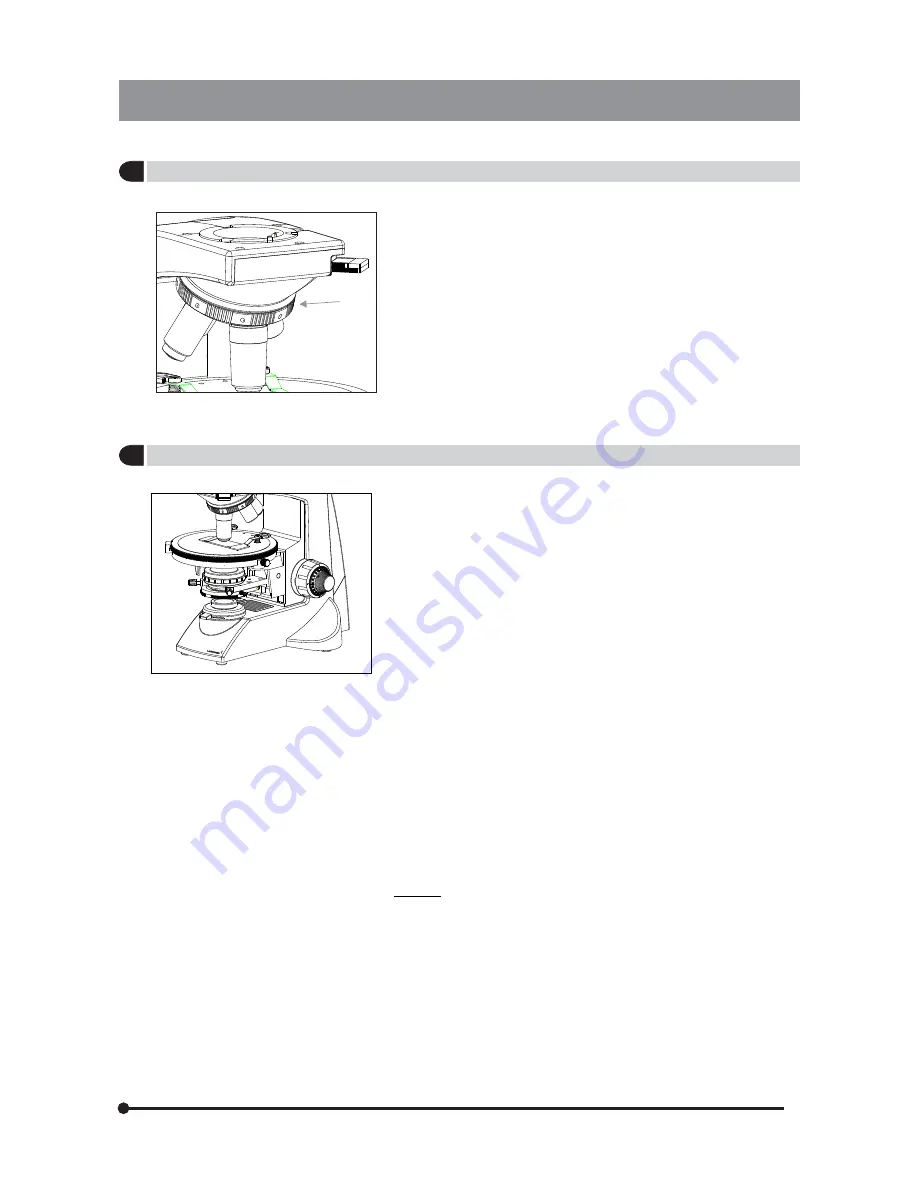
Rotate the revolving nosepiece (1) so that the objective to be used is in line
above the specimen. Always use the knurled surface to rotate the objective
nosepiece.
6
Switching the Objectives
Fig. 35
The designated immersion oil should be in contact with the cover lens of
the 100X immersion objective. If not, the specimen will appear distorted
and dull. It is recommended that LABOMED immersion oil is always used.
Immersion Process:
1. Bring the specimen in focus using first the 10x, then 40x objective.
2. Disengage the 40x cycling towards 100x, and place a drop of immersion
oil on the center point of the specimen.
3. Rotate the revolving nosepiece to engage the immersion objective and
rotate the fine adjustment knob to bring the specimen into focus
(Since air bubbles in the oil will affect the image quality, make sure
that the oil Is free of bubbles. To remove bubbles, rotate the revolving
nosepiece slightly to agitate the oil).
4. The condenser of this microscope manifests the full performance when
oil is placed between the slide glass and the front lens of condenser. If oil
is not placed there, the observed image may appear dark.
5. After use, remove oil from the objective front lens by wiping with lens
tissue slightly moistened with an ether (70%) alcohol (30%) mixture.
Caution
If immersion oil makes contact with your eyes, rinse eyes out
thoroughly with fresh water. If immersion oil makes contact with
skin, wash affected areas with soap and water.
If prolonged discomfort is experienced, consult your physician
immediately.
7
Using the 100X Immersion Objective
Lx POL
LABOMED
USA
RP POL PLAN ACHRO
40X / 0.65 / 0.17
9124040
LABOMED
USA
RP POL
PLAN
ACHRO
10X / 0.25 / 0.17
9124010
R
Fig. 36
1
24




































